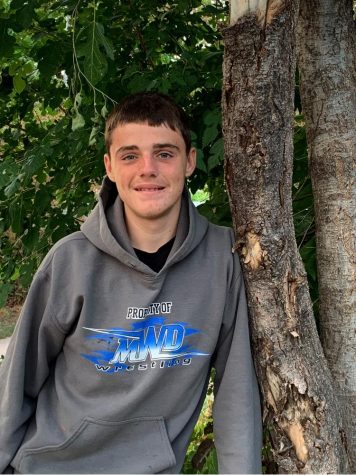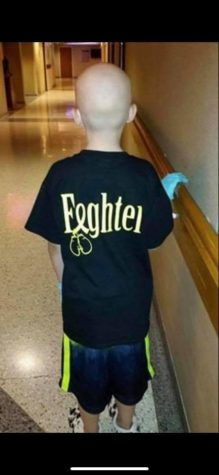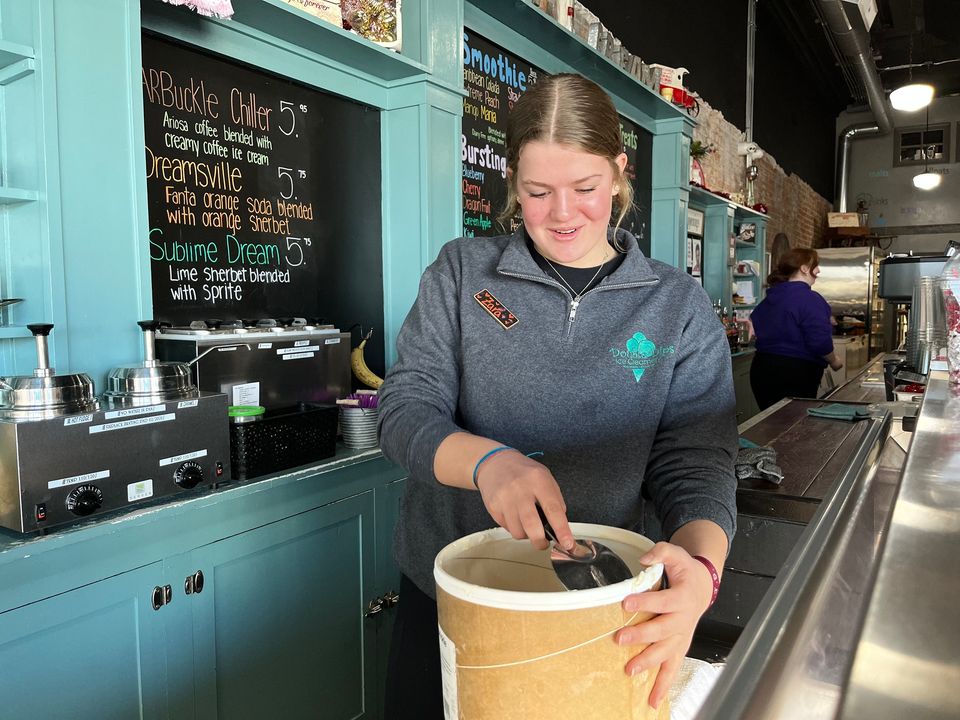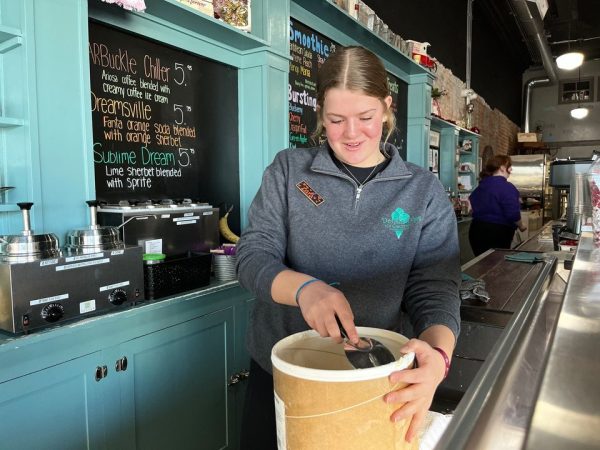Go gold for children
September is childhood cancer awareness month
The beads in this picture represent everything Darin went through while having cancer treatment. Each bead represents something different. Red is blood transfusions, white is hospital stays and yellow is chemo. There are different beads for radiation, scans, blood draws and out patient stays that aren’t in that specific string of beads.
October 18, 2021
Diagnosed with Neuroblastoma at the age of eight, Darin Neben has been fighting for his life for the past seven years. Even when he goes into remission, he still has to fight to keep the cancer at bay. “I was only eight. Now I’m 15 and I had it three times between eight and 15 and now I think I’m two years in remission,” Darin said.

Neuroblastoma is a cancer most often found in children under the age of five. It can be found on the small glands on top of the kidneys. It can develop in the belly, chest, neck, pelvis and bones.
The five-year survival rate for children with Neuroblastoma is broken up into three different ranges. For low risk, it is above 95%. At intermediate risk, it is between 90 and 95%. However, for high-risk cancer, the survival rate is under 50%. “I had stage 4 Neuroblastoma,” Darin said. “Through the middle of treatments and things, I felt like I was going to die because I had such a low percentage of living.”
From 1995 to 2015, only three new drugs for cancer treatments were developed for childhood cancer. There is an explanation for these small numbers. Only 4% of the money that is raised for cancer goes to research treatments for kids. Darin’s mother, Kristina Neben, is an advocate for kids with cancer. “I could see firsthand how it affected our family,” Neben said, “They don’t have enough funding out there for children’s treatment.”
However, some organizations exist solely for the purpose of raising money for these research treatments. “Sammy’s Superheroes is a nonprofit organization that raises money for treatments for kids,” Neben said. Having been around since 2017, the Sammy’s Superheroes organization has been trusted by families like Darin’s to raise money for research. According to cancer awareness website Cure Bears for Hope and Love, “Cancer is the number one disease killer of children. Yet, on average, only one penny of each cancer research dollar is spent on children.”

While Darin is one local kid who survived cancer, there are still approximately 15,780 kids living with cancer right now. Today, seven of them will die. However, significant advances in cancer therapy mean that more than 70% of children diagnosed with cancer are expected to become long-term survivors. “Every day, 46 kids are diagnosed with cancer. Every day seven children will die from cancer. Pediatric Cancer kills more kids than Cystic fibrosis, pediatric AIDS, and asthma combined. One in 330 children will develop cancer by age 20. Treatment side effects can last a lifetime.” (Cure).




